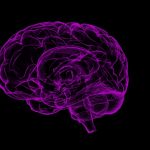U.S, January 9, 2020 (MERRYJANE) It is well known that cannabis can help treat nausea induced by chemotherapy, but many older women with cancer are actually using medical marijuana to treat pain and anxiety.
We know that cannabis can treat a variety of ailments, but the most widely-accepted use of medical marijuana is to alleviate nausea brought on by chemotherapy. The majority of US states allow cancer patients to use weed to help deal with nausea, but a recent study found that this accepted usage may not be as popular as it seems.
Dr. Marisa Weiss, oncologist, breast cancer specialist, and founder of non-profit BreastCancer.org, conducted a study to determine the main reasons why women with breast cancer use medical marijuana. Dr. Weiss began incorporating cannabis into her practice in 2018, after her home state of Pennsylvania legalized medical marijuana. During the first ten months of this practice, Dr. Weiss surveyed 34 of her patients, asking them specifically why they were using medical cannabis.
“I wanted to know and be able to share with other people in the field — doctors and patients — what the symptoms are for which women are seeking medical cannabis, and if they align with the evidence showing its efficacy,” Dr. Weiss explained to Forbes. “Basically, is there a good match between why people are seeking cannabis, and what it has to offer? And there is.”
Surprisingly, nausea was one of the least popular reasons people sought out medical marijuana. Out of 22 women with early stage breast cancer, 73 percent used marijuana to treat pain, 45 percent used it for anxiety, 50 percent for insomnia, and only 4 percent for nausea. Among 9 patients with metastatic cancer, 89 percent used weed to treat both pain and anxiety. A third of these later-stage patients turned to medical cannabis to treat insomnia, nausea, or anorexia.
Most of these patients suffered an average of three symptoms at once. Neuropathy, or pain in the hands and feet, is a common side-effect of chemotherapy, and is often experienced in combination with other symptoms. Patients suffering from anxiety were also likely to experience insomnia. Dr. Weiss also observed that patients in her practice were able to lower their dose of opioid medications by using medical cannabis to treat their pain, an observation that has been backed up by prior research.
The results of this study are limited by the small size of the subject pool, but Dr. Weiss is already working to expand upon her research. BreastCancer.org is currently conducting a new nationwide survey to discover breast cancer patients’ knowledge about and attitudes towards medical marijuana. The survey will also ask women about their interactions with doctors regarding cannabis.
The results of this survey could help oncologists better understand how to communicate with their patients about medical marijuana. A recent study found that, although 73 percent of oncologists recognize the therapeutic value of cannabis, 53 percent of these doctors feel uncomfortable talking to their patients about weed.
Dr. Weiss is currently collaborating with researchers from Columbia University on a trial to test cannabinoids as a treatment for peripheral neuropathy caused by chemotherapy. She is also about to launch a clinical trial to investigate a new hemp-based treatment for neuropathy among patients suffering from breast, ovarian, or colon cancer.







